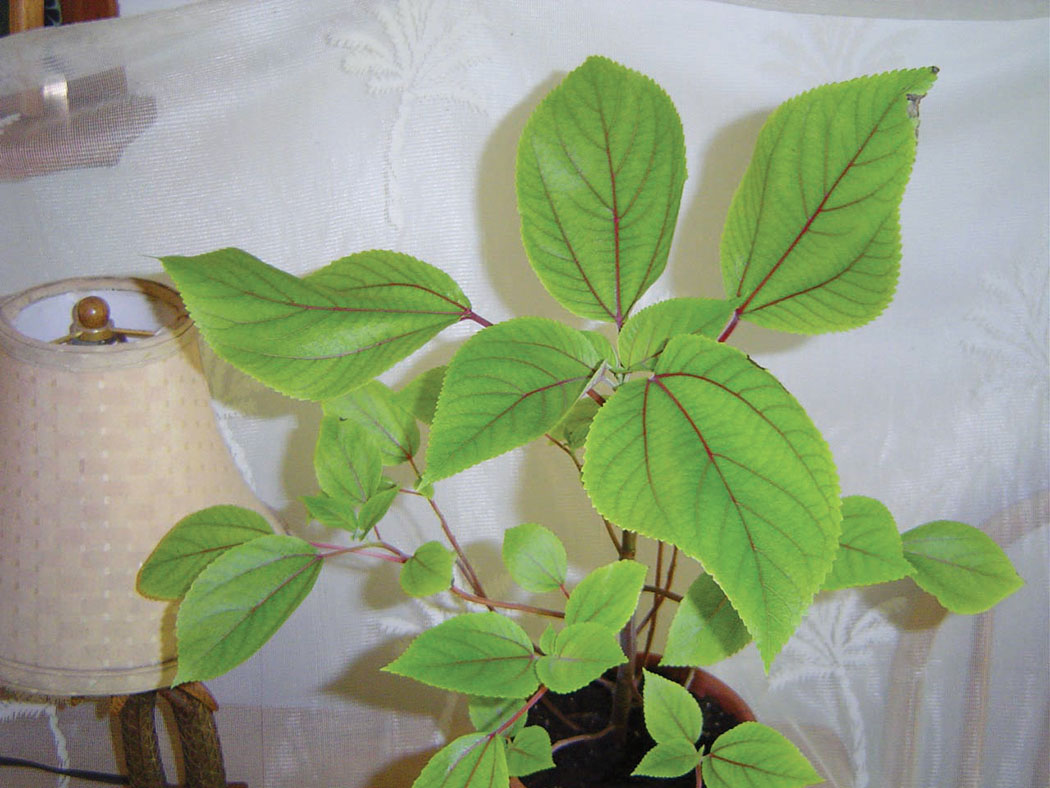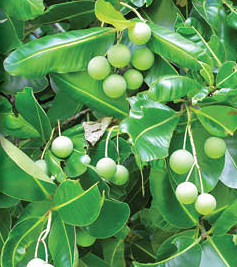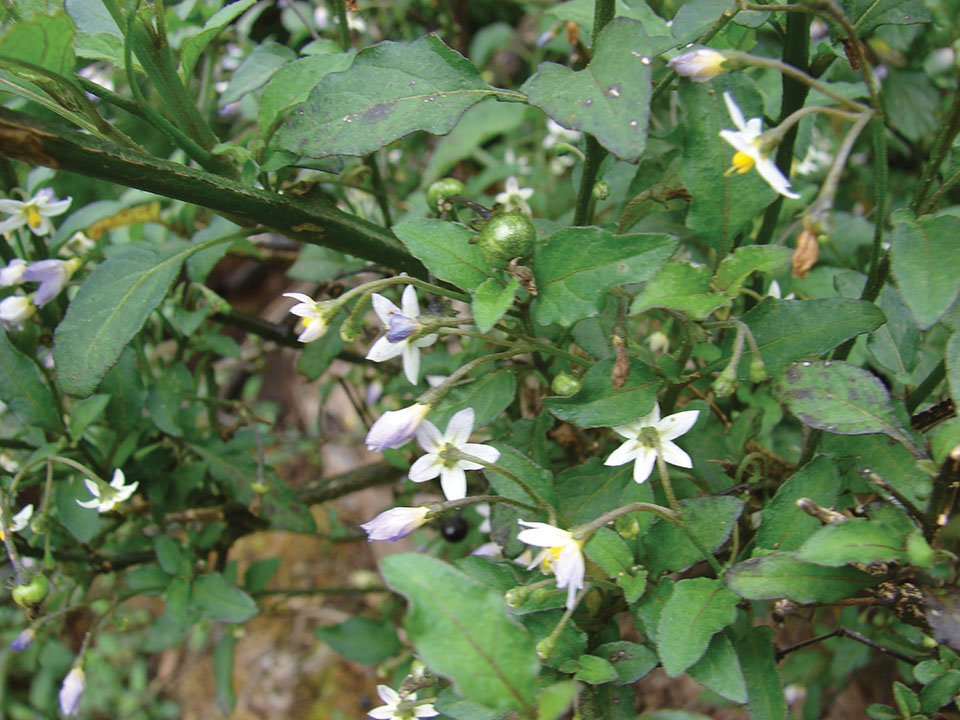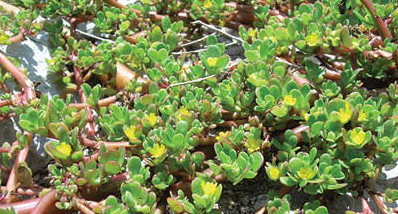
Healing Plants: Māmaki, The “Stingless” Stinging Nettle
 By Barbara Fahs
By Barbara Fahs
You might have seen dried māmaki leaves for sale at your local drug store or farmers market. Tea made from this endemic Hawaiian plant is tasty and popular.
Known as Pipturis albidus, māmaki is a perennial shrub or small tree that can grow to 15-feet tall and live for five years or longer. The leaves are fairly large and pretty and grow from 2 to 12-inches long. They also have attractive purple-red veins. Māmaki occurs on all of the major Hawaiian Islands. It is in the same plant family (Urticaceae) as stinging nettles, which grow in widespread areas of the U.S. mainland, Canada, Greenland, and parts of Europe. Unlike its “cousin” plant, māmaki has no stinging hairs; it is believed this defense mechanism did not develop during its evolution due to the absence of predator animals (including humans) and insects.
Medicinal Uses
One of the important reasons to learn about plants before you use them is to understand what chemical components and properties they include. Although māmaki has not been well studied in laboratory tests, its cousin, the stinging nettle, has. According to the Physician’s Desk Reference for Herbal Medicines, nettles can help to purify the blood, cause phlegm to be expectorated, cause the contraction of body tissues (astringent), and increase urination (diuretic). Because this information applies to the related nettle, we can expect māmaki to have similar effects.
In former times in Hawai‘i, māmaki leaves were commonly used to help support healthy prostate glands and the urinary tract, which supports its use as a diuretic. It was also used to help relieve allergies and hay fever symptoms. Locher et al. published the only study conducted on māmaki in 1995. It revealed that an extract of the plant showed selective anti-viral activity against Herpes Simplex Virus and Vesicular Stomatitis Virus, growth inhibition of Staphylococcus aureus and Streptococcus pyogenes, and slight anti-fungal activity.
Growing Māmaki

Māmaki does well in both windward and leeward gardens. Be sure to plant it in an area with well-drained soil where it will get some shade every day, such as under a fruit tree or large heliconia. If you live at a low elevation, this is especially important because it thrives in slightly cooler areas and naturally occurs up to around 6,000 feet in elevation.
Cuttings can be difficult to start, so I recommend starting your māmaki crop from seeds or purchased plants. To plant seeds, simply scatter them on top of potting soil in a pot or flat, without covering with additional soil. Keep it moist and give it some sun every day. When young plants are about two inches tall, transplant them to individual pots. Wait until they grow to about one foot tall before planting them in your garden. Mulch generously with raked leaves from nearby trees and keep an eye open for drooping during hot weather.
Māmaki needs little or no fertilizer, although it will “benefit from an application of a balanced slow release fertilizer with minor elements every six months,” according to NativePlants.Hawaii.edu.
Be sure to water māmaki during dry spells.
The native King Kamehameha butterfly larvae (Vanessa tameamea) and the Koa or Blackburn butterfly (Udara blackburni) use māmaki as their host, so if you notice caterpillars feeding on your plants, try not to kill them. Instead, collect them and treat them to a ride to another location where your māmaki will be safe from these hungry creatures. This is an important reason to avoid using pesticides on your māmaki plant.
How to Make Māmaki Tea
Fresh is always best when making any type of plant medicine. In fact, māmaki’s young leaves are edible, either raw in salads or cooked like spinach.
- Place six fresh or dried māmaki leaves into a teacup or mug.
- Boil water in a kettle or pan.
- Pour boiling water over your leaves, to fill the cup.
- Allow to steep for 10 minutes.
- Enjoy with honey, sugar, lemon, or milk.
DO NOT BOIL māmaki leaves in water.
Cautions
Beware of drinking large quantities of māmaki tea. Because it is a diuretic, it can cause from simply inconvenient to troublesome urination. And the strange little berries, which are gelatinous white blobs that form on the stems, can have laxative effects. I tell people not to eat them unless they need a laxative!
Contact writer Barbara Fahs: hiiakas@lava.net
Sources and more info
Plants.usda.gov/core/profile?symbol=urdi
Nativeplants.hawaii.edu/plant/view/Pipturus_albidus
Ehow.com/how_4422194_use-hawaiian-mamaki.html
Ncbi.nlm.nih.gov/pubmed/8786654
NOTE: The use of herbal products should not be taken lightly. Consult a physician before using any herb, especially if you are taking any prescribed medications, due to drug interactions. Do not use this herb if pregnant or nursing: nettles are a galactagogue (increases milk production).


